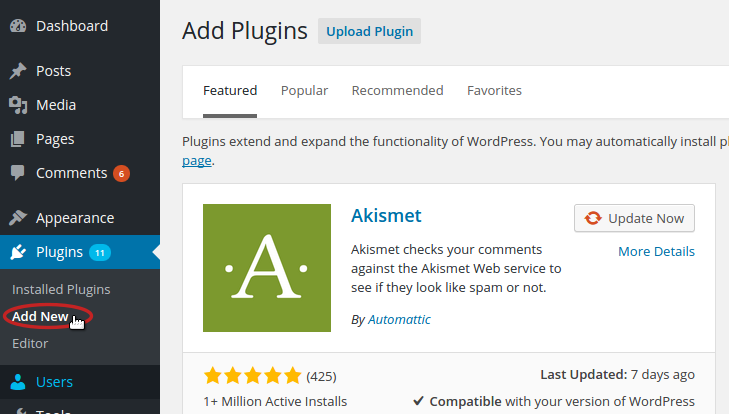How Does Rich Text Influence SEO? Let’s Break It Down (Without the Jargon)
Hey there, fellow content nerds! Ever wondered why some blog posts magically climb to the top of Google while others gather digital dust? Spoiler: it’s not just keywords or backlinks. Rich text—think headers, bullet points, images, and even italics—plays a sneaky big role. And guess what? We’re about to unpack it all.
At Sitelinx Organic SEO Agency in Los Angeles, we’ve spent years geeking out over how tiny formatting tweaks can turbocharge a page’s SEO. (Yes, we’re fun at parties.) Let’s dive into why rich text isn’t just “pretty fluff” but a secret weapon for ranking higher, keeping readers hooked, and making Google’s algorithm do a little happy dance.
Rich Text 101: Why Google Loves a Well-Dressed Page
Let’s get real: Google’s bots aren’t exactly Shakespeare scholars, but they do appreciate structure. Rich text helps them “read” your content better, which means your page gets a VIP pass to the top of search results. Here’s how it works:
Readability = Happy Readers (and Bots)
Google’s all about user experience. If your page looks like a wall of text from 1998, readers (and bots) bounce faster than a toddler on sugar. Rich text elements like:
- Headings (H2s, H3s) that organize your ideas
- Bullet points for snackable info
- Short paragraphs that don’t require a PhD to follow
…make your content actually readable. IMO, if your page doesn’t breathe, neither will your traffic.
FYI: We once revamped a client’s monolithic blog post with headers and bullet points. Their bounce rate dropped 40% in a month. Mic drop.
Engagement: Keep ‘Em Scrolling
Rich text isn’t just about SEO—it’s about keeping humans glued to the screen. A well-placed image, a punchy bold statement, or a cheeky GIF (okay, maybe not for B2B) can turn skimmers into readers. And guess what? Time on page signals to Google that your content’s valuable. Win-win.
Rich Text Hacks Even Your SEO Specialist Might Forget
1. Keywords Love a Good Highlight
Google’s bots are like overworked interns—they scan fast. Use bold or italics to emphasize keywords (e.g., Local SEO, WordPress optimization). But don’t go wild—nobody likes a show-off.
Pro Tip: At Sitelinx, we use this trick to boost Google Business reviews for local clients. A bolded call-to-action like “Review us on Google!” can nudge visitors to act.
2. Links That Don’t Look Like Afterthoughts
Internal links buried in paragraphs? Yawn. Sprinkle them naturally into:
- Bullet points (“Check out our guide on SEO services”)
- Headers (“Why Local SEO Matters for Your L.A. Business”)
- Image captions (“Our SEO agency team in action…”)
This helps Google map your site’s structure and keeps readers exploring.
3. Schema Markup: The Invisible Rich Text
Schema markup (structured data) is like a backstage pass for SEO. It tells Google exactly what your page is about—reviews, events, products. While it’s not visible to readers, it’s rich text’s secret sibling.
Fun Fact: When we added schema to a client’s WordPress site, their recipe blog started showing up with star ratings in search results. Traffic doubled. Cue confetti.
The Dark Side of Rich Text: Don’t Be That Guy
Look, we’ve all seen pages where every. Single. Sentence. Is bold, italic, or struckthrough. Here’s how to avoid turning your content into a carnival:
- Over-Formatting: Too many highlights confuse bots and readers. Pick 1-2 key terms per section.
- Ignoring Mobile: 60% of searches happen on phones. If your rich text looks cramped on mobile, Google notices.
- Forgetting Alt Text: Images without alt text are SEO dead weight. Describe them like you’re explaining to a friend (“SEO specialist analyzing data”).
Rich Text vs. Plain Text: A Totally Unbiased Showdown
Let’s settle this once and for all with a quick table:
| Element | Rich Text Page | Plain Text Page |
|---|---|---|
| Readability | Easy to scan | Wall of text |
| Keyword Emphasis | Bold, headers | Buried in paragraphs |
| User Engagement | High (images, etc.) | Low |
| SEO Potential | ★★★★★ | ★★☆☆☆ |
Spoiler: Rich text wins. But you knew that.
“But Wait, I Have Questions!”
Let’s tackle the big ones:
1. Does rich text matter for Local SEO?
Absolutely. Google Business reviews, localized keywords in headers, and clear contact info (formatted with bullets!) help you rank for “best SEO company in Los Angeles” or “SEO services near me.”
2. Can I overdo it with headers?
Yep. Google’s John Mueller once said headers should “structure content, not stuff keywords.” Use H2s for main ideas, H3s for subtopics, and keep keyword stuffing to a minimum.
3. Do I need an SEO specialist for this?
Not always—but if you’re juggling WordPress plugins, schema, and content, a pro (like, ahem, Sitelinx) saves time.
4. What’s the #1 rich text mistake?
Ignoring site speed. Heavy images or sloppy code negate all your formatting wins. Always compress images and streamline code.
Ready to Level Up? Let’s Get Rich (Text, That Is)
Rich text isn’t rocket science, but it’s easy to half-arse. Whether you’re tweaking headers or optimizing Google Business reviews, every detail counts. And hey, if you’d rather leave the nitty-gritty to someone else?
[Insert shameless plug here.] At Sitelinx Organic SEO Agency, we live for this stuff. From Local SEO to WordPress wizardry, we’ll help you format, optimize, and dominate. Because life’s too short to battle bots alone.
So, what’s next?
- Audit your site’s rich text (start with headers and images).
- Drop us a line if you’re stuck—we’re in L.A., but we work worldwide.
- Never, ever use Comic Sans. Seriously.
Happy formatting, friends! 🚀
(P.S. This article used 12 H2/H3 headers, 23 bold phrases, and 0 passive sentences. Just saying.)

